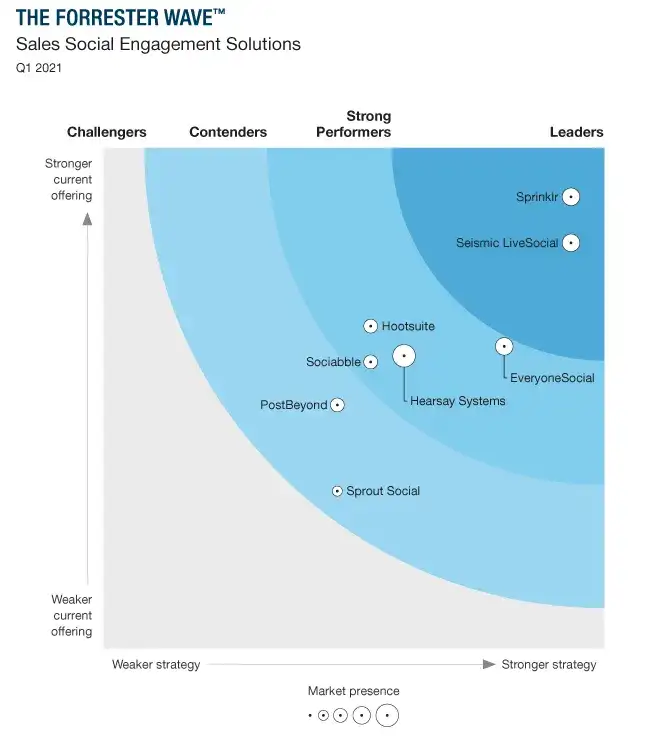The global leader in enterprise social media management
For over a decade, Sprinklr Social has helped the world’s biggest brands reimagine social media as a growth driver with a unified platform, industry-leading AI and enterprise-grade scale.

4 key considerations for your conversational commerce platform
The term “conversational commerce” was first coined in a 2015 Medium article written by Uber’s Chris Messina. He predicted that it would “become the primary way in which people transact on their mobile devices.” Given that June 2021 marked the first time that more than half the world’s population was on smartphones, the time for this reality is now.
Most direct-to-consumer (D2C) businesses are figuring out how conversational commerce fits into their strategies. Marketing teams are trying to identify the optimal user experience, while IT teams are working to get a handle on the technology required to deliver those experiences at scale.
The most successful brands have approached the implementation of a conversational commerce platform by considering the following:
Sprinklr Named a Leader in The Forrester Wave, Sales Social Engagement Solutions, Q1 2021
- 1. Establish your end-goals
- What are the right key performance indicators (KPIs), beyond revenue, that will measure success?
- Should the focus be on serving existing demand or obtaining new customers?
- What are the strategic goals when entering into the conversational commerce space?
- 2. Evaluate your current customer experience
- 3. Tap into the power of artificial intelligence
- 4. Choose a unified conversational commerce platform for a unified customer experience
1. Establish your end-goals
While it’s important to keep in mind that agility is key in a conversational commerce platform, there are some crucial questions that your brand must answer off the bat.
What are the right key performance indicators (KPIs), beyond revenue, that will measure success?
Incremental revenue contribution is often the primary KPI. However, many brands are also tracking and measuring additional outcomes and benefits of serving consumers on their preferred channels: loyalty program sign ups, appointments booked, CRM leads captured, and repeat purchases. Tracking beyond revenue will give you a more holistic view of the success of the program.
Should the focus be on serving existing demand or obtaining new customers?
For some brands, the main challenge is getting a handle on the huge volume of messages coming in daily. But if you’re going after new customers, you’ll likely need to launch paid media campaigns to get in front of them. In this case, it’s important to consider the efforts across teams for paid media execution and customer engagement in order to measure work from paid campaign execution through conversion.
What are the strategic goals when entering into the conversational commerce space?
It’s important to establish the needs of your business: Is it more important to have timely, effective responses using a virtual assistant? Or maybe there’s a greater need to build and deepen relationships with prospects and customers through live human interaction. Whatever path you choose for your conversational commerce efforts, ensure that you align with business goals while creating the optimal experience for your customers.
2. Evaluate your current customer experience
Consistent, quick, but meaningful conversations can drive trust and loyalty. It’s critical to take an honest look at the experience you’re currently delivering to your customer base. Is it consistent across every interaction on every medium? A poor experience indicates to your customers that you’re more interested in a transaction than a relationship. It’s the fastest way to alienate the audience you’re trying to reach. Before you begin your conversational commerce journey, examine customer satisfaction scores, frequency and length of contacts, and, if applicable, number of repeat purchases.
It’s also important to understand where your customers are. Too many brands make the mistake of using the channels they prefer instead of the channels their customers are on. Are there additional channels where your customers are engaging but you’re not responding? If so, you’re missing out on valuable opportunities.
3. Tap into the power of artificial intelligence
To operate effectively at scale, you’ll need to make decisions about what level of automation makes the most sense for your business. For some brands, live human interactions are key. They make investments in customer service and have dedicated teams ready to engage. Other customers prefer to automate interactions where possible with conversational AI and bots to guide customer conversations.
Regardless of the path you choose, leveraging AI is the key to success in a conversational commerce strategy. AI-powered technology provides highly accurate customer intent detection up front so that each interaction can either be quickly routed to the right team member, or a chatbot can guide the customer down the correct journey.
Whether you’re automating interactions or not, it’s critical to integrate systems such as support knowledge bases, fulfillment and tracking systems, CRMs, ticketing platforms, and other key data sources. This will allow you to capture all interaction details in a single, unified platform and build out a 360-degree view of each customer, which can be leveraged by a customer service representative or virtual assistant.
4. Choose a unified conversational commerce platform for a unified customer experience
One of the most important decisions you’ll make when you implement conversational commerce is the technology you use. Sprinklr’s unified customer experience management (Unified-CXM) platform combines omnichannel coverage with advanced AI capabilities to help global brands fully leverage every customer engagement. By using Sprinklr’s unified platform, your brand can:
- Drive up to 185% more revenue and 80% more conversions
- Reduce customer experience costs by 40-60% with AI-powered bots and sales support
- Measure results with integrated reporting and attribution
- Create an end-to-end personalized omnichannel customer experience
Learn more about Sprinklr’s Conversational Commerce platform.









